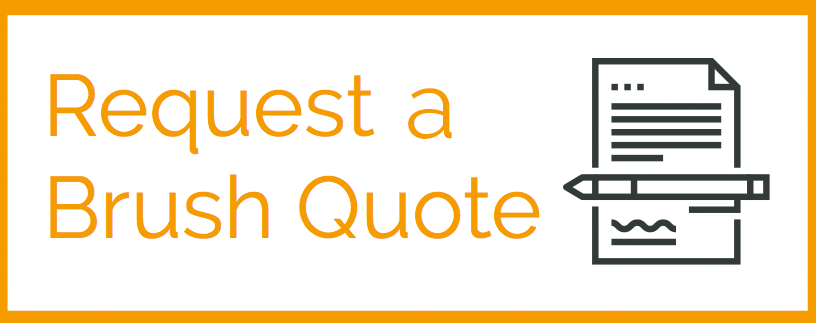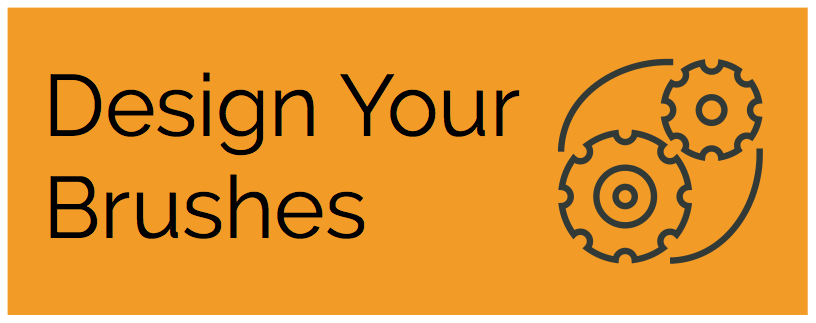- Stock Brushes
- Custom Brushes
- Brushes By Shape
- Brushes By Type
- Metal Channel Strip Brushes
- Flexible Strip Brushes
- Artist Brushes
- Staple Set Brushes
- Wire Drawn Brushes
- Conductive & Antistatic Brushes
- Anti Static Hand Held Brushes
- Anti Static Pencil Brushes
- Anti Static Strip Brushes
- Conductive Strip Brushes Brass
- Conductive Strip Brushes Thunderon
- Conductive Strip Brushes Conductive Nylon
- Conductive Hand Held Brushes
- Conductive Strip Brushes Stainless Steel
- Conductive Pencil Brushes
- Dissipative Brushes
- Dissipative Nylon Strip Brushes
- Dissipative Nylon Push Broom
- Insulative Strip Brushes
- Insulative Pencil Brushes
- Insulative Hand Held Brushes
- Titanium Brushes
- Twisted In Wire Brushes
- Epoxy Wound Brushes
- Step by Step Brush Design
- Common Uses
- Brush Holders
- Brush Info
- Design Sheets
- About Us
- Contact Us
FAQ's | Precision Brush Stock and Custom Brushes
1. Are your brushes made in the US?
Yes, we have been a leading brush manufacturer in the United States since 1951 and all our brushes are crafted at our manufacturing facility in Solon, Ohio. As a custom brush supplier, we source materials from the U.S. and all over the world. However, we can certainly work with you to ensure all materials for a given brush order are from the U.S. if that is a requirement.
2. What kind of brushes do you make?
When we first went into business in 1951, our main focus was vacuum cleaner brushes and household brush products. Before long though, we noticed a real need in the market for custom made brushes and specialty brushes. Our focus shifted and we became specialty brush manufacturers, fulfilling everything from one-off, single brush orders for a specific need to high-volume brush orders for manufacturers and machinery. (And yes, we still do vacuum cleaner brushes!)
3. If the brush is loose in the holder, how do I get it to stay in place?
The strip brush is a formed metal channel, not a machined part with exact tolerances. The channel width varies slightly; the larger the filament diameter, the more the channel will have slight variations. The brush will need to slide into the aluminum brush holder, so we make the brush slightly smaller in diameter than the brush holder opening. (The brush filaments may also catch in the opening of the aluminum holder when it is inserted so clearance is important.)
To tighten the brush in the holder, the aluminum holder can be staked or punched on the ends and in the middle to create a more snug, secure fit.
4. How do I pick the correct brush holder for my brush?
To select a brush holder, first determine the numerical channel size of the brush. There is a corresponding group of holders that is specific to that channel.
There are often many holders available with different brush angles, positions, number of brushes per holder, etc. For example, you may want an angled brush for wiping a conveyor or a straight brush for creating a door seal or you may need a holder that secures two brushes to create a light-tight seal or for pest control.
If you have any additional questions or concerns about selecting the right brush holder, please feel free to call our office and one of our specialists can make sure your holder selection matches your brush needs.
5. Do the brush holders have pre-drilled holes for mounting to doors, machines, vehicles, or other surfaces?
No, the brush holders do not come pre-drilled. We’ve found that, for most applications, our customers can mount their brushes more accurately and securely by drilling the holder into the desired mounting location and securing it with a bolt or screw.
If you are working with a set of existing drill holes that need to match, we can look at providing pre-drilled holes, but it is not something Precision Brush does by default. Let us know what you need and we’ll work together to create a custom brush product plan.
6. Why are metal channel brushes and brush holders sold separately?
Many times, customers don’t need the holders. They may plan to use a clamp, or sometimes they weld a brush into place for their application. Other times, people simply want to replace a brush in an existing brush holder.
If you need to have a brush and holder delivered together as a complete, ready-to-use part, we can do that, too. As custom brush manufacturers, we make our metal channel brushes and our brush holders available for order together or as stand-alone items.
7. Why do I need a brush holder?
You may not always need a brush holder (i.e., you could weld it into place or use a clamp instead), but many times, you’ll need the holder to secure the brush so it can perform the desired action you’ve purchased it for. You may also want a brush holder for aesthetic reasons if the brush is being used in areas where it will look neater and cleaner for a holder to keep the brush in place rather than welding or a clamp.
8. How do I attach the brush to my surface?
This depends on the application and how secure the brush needs to be. Sometimes the brush can be clamped or welded on; sometimes it fits into an existing groove; sometimes it can be secured into place with a flathead screw that acts as a clamp. Most of the time, you will want to choose a brush holder that fits the full length of the brush and holds it in place so it can be securely attached to the working surface.
9. Why would I want an angled versus a straight brush holder?
An angled brush tends to do a better job of creating a brush seal, particularly on uneven surfaces (i.e., a door brush used to create a pest seal, light seal, or temperature seal). Angled brushes have a little more variability in the filaments so they tend to bend out of the way less and better handle use against less-than-flat surfaces.
Straight brushes are often used when the bristle tips are doing the brushing or if there is cosmetic use for the brush for instance it is it closing a gap or lying flat against a surface.
10. What are the lead times on stock items?
If we have items in stock, we can often ship the same day or next day. If we are low on quantity, it may take up to two weeks to ship your order.
11. Do you have minimum quantity requirements for brush orders?
In general, we do not have any minimum quantity requirements, though some stock brushes come in boxes that cannot be split.
12. What is the lead time for custom manufactured brushes?
Lead time on custom brush manufacturing is typically three weeks. Depending on your particular brush requirements, however, we may be able to fill your order in less time.
13. How long does it take to make? Can my order ship today?
Custom brush orders do not ship same-day, as it takes time to set up the machinery to create your specialty brush. Production time may be up to three weeks. Stock brushes can sometimes be shipped same-day. Delivery time on all brushes will depend on where you are located. All orders ship from our custom brush manufacturing facility in Solon, Ohio.
14. What is the price per foot for metal channel strip brushes?
Since 1951, we’ve quoted over 100,000 different brushes for our customers. The price per foot varies based on the type of material used, quantity ordered, metal channel size, trim length, and other variables. There are a seemingly infinite number of combinations! Call us today and we’ll get started on a quote for you. We can often quote you immediately or same-day over the phone.
15. I just need “a standard brush.” Why do you need dimensions or specifications?
You need a brush, and we make brushes! Simple right? Yes and no. We can definitely help you secure the brush you need. Believe it or not though, there’s no such thing as a “standard brush.” Your standard needs are not the same as someone else’s, and that’s where custom brush manufacturing comes in. You can order just one brush or thousands, and we’ll help you every step of the way.
16. How do you determine the overall trim of a strip brush?
The overall trim (also known as OAT) is determined by the length of the filament and the metal channel height combined. The easiest way to determine OAT of a brush you’d like to duplicate is to measure from the base of the channel to the tips of the filament. In cases where the brush has been worn down from use, some additional length should be built into the measurement. If you’re unable or unsure about measuring the OAT yourself, you can send the brush in to us and we can determine it in house.
17. Why do I have a part number and a stock number?
Many of our stock brushes have stock numbers. When we sell a brush to a customer (whether it’s a stock brush or a custom brush), we assign a part number. In cases where you have ordered a stock brush, this means that your brush will likely have both a stock number and a part number.
Designating a part number to your brush order allows us to access your particular brush specifications with ease in the future. Any time you need to reorder a product, all you need to share with us is the part number and all your customized brush requests, billing preferences, shipping information, etc. will already be associated with that number. In short, stock numbers apply generally to stock items that are available to all customers. Part numbers apply specifically to your brushes and your orders, allowing us to serve you more quickly and efficiently.
18. Is a nylon brush better than a polypropylene brush?
Each brush type has its own strengths and qualities. Nylon filaments have better bend recovery. If the brush is doing a lot of bending in its application, a nylon brush comes back to its original shape more easily than a polypropylene brush.
Polypropylene brushes may hold up to certain chemicals better than nylon brushes. They are also a bit more cost effective and lighter.
19. If I have a gap that I am trying to close, what size brush do I need?
It depends on the brush application. In many applications, you would want to use a brush that exactly meets the gap size. If the brush is moving, you may want to add an eighth or a quarter of an inch to the bristle length. In applications where you have two brushes coming together to close a gap, you will want to have a slight overlap — often about a quarter of an inch.
20. How much of the brush should be touching to make a good seal?
This depends on the application. Typically, the more filaments, the smaller the filaments, and the more touching (i.e., surface interference), the better the seal. For longer gaps, you may sometimes need to use a larger diameter filament so that the brush doesn’t sag.
21. How much of the brush should come into contact with my surface?
For most brush applications, you want the brush tips to be the main contact points with the surface. For rotary brushes and cylinder brushes, for example, the tips do most of the brushing. If the filament sides are used, the brush ends up doing more wiping than brushing, flicking, or cleaning. For sealing applications, a minimal brush-to-surface interference of about an eighth of an inch would typically be ideal.
22. What color bristles are available?
Black is the standard brush filament color. You can also order brushes in natural (an absence of color, typically off white or clear), white, or other specially requested colors to fill your custom brush application needs. Please note that colored brush filaments have more limited diameter selection options.
23. What is the difference between crimped filaments and level filaments?
Crimped bristles have a wave to them, known as amplitude (the height from the bottom of the wave to the top of the wave). They also have a specific number of waves per inch which spreads the filament out more than level filaments which are straight.
Many times, crimped filaments are used to create a bushier brush — one with less space between the tufts or rows of brushes. They are also sometimes used in coil or cylinder brushes where the brush surface needs to act more like a carpet of bristles.
Level filaments are better for uses such as brush seals, pest control, light control, temperature control, and so on. They align more tightly, creating a more compact surface. When used in a coil brush design, level filaments appear more like a spiral than a smooth, “carpeted” surface.
24. Do you have any distributors for your custom made brushes?
No, we do not use distributors. All of our brushes are made in and shipped from our Precision Brush specialty brush manufacturing facility in Solon, Ohio.
25. How much will it cost to ship my brush order?
All of our brush orders are shipped out from Solon, Ohio. Shipping prices vary based on your location as well as the weight and dimensions of your order. If you would like a shipping cost estimate, just give us a call.
26. What credit cards do you accept?
We accept American Express, MasterCard, and Visa. We can also receive payment in
Bitcoin, Ethereum or Litecoin
27. Can I order Precision Brush products online?
All of our products are quoted individually to create custom brushes for our customers, so direct online ordering is not an option. You can, however, fill out our online design sheet to get this process started. You can also call, fax, or email us and we’ll get back to you right away — often the same day or next business day.
28. How can I place a brush order right now?
For custom brush orders, we will provide you with a quoted price. Once that quote is accepted and payment is received, we will fill your order promptly. For stock products or reorders, contact us to remit payment and we’ll fill your order right away.
29. Can I order multiple items and return what I don’t like? Can I return your brushes if they don’t work in my application?
In general, no. We can accept returns on stock brushes with a restocking fee, and you would also be responsible for return shipping costs. However, we do not accept returns on custom brushes. These specialty brushes are custom made just for you, and we cannot resell them once manufactured.
In order to ensure you get the brush you need, our specialists will work with you to carefully plan out all brush specifications. You can even request brush or material samples to help you finalize your decision.
30. Do you have a store near me?
Our custom brush manufacturing facilities are in Solon, Ohio (in the greater Cleveland area), but we ship our brushes nationwide and all over the world.
31. How long are brushes guaranteed to last? How can I tell how long they will last?
Due to the wide range of unique brush applications we produce for, we don’t guarantee our brushes to last for a specific amount of time. For example, some brushes are left out in the sun, which compromises the filament integrity; some brushes are used for aggressive cleaning applications, which wears them down much more quickly.
Whatever your brush application, we can guarantee that we will recommend and offer the very best materials to help you meet the desired brush use. You will receive the highest quality brush craftmanship and workmanship from our Precision Brush specialty brush manufacturing experts.
32. Does Precision Brush Company manufacture brushes that are flame resistant?
Yes, we manufacture flame-resistant brushes. High-temperature wire brushes made of carbon, stainless steel, brass, or phosphor bronze offer flame resistance. Some synthetic filaments are resistant to high temperatures, but not to an open flame.
33. How fast can I spin your cylinder brushes?
Generally, we don’t recommend exceeding 200 rpm. It depends on the application, but most brushes tend to work best going as slow as possible while still fulfilling your brushing requirements. Larger brushes will max out at slower speeds than smaller brushes. Whatever size brush you are using, spinning more slowly will make the brush last longer; it won’t wear out the filaments (or the product or surface they’re touching) as quickly.






